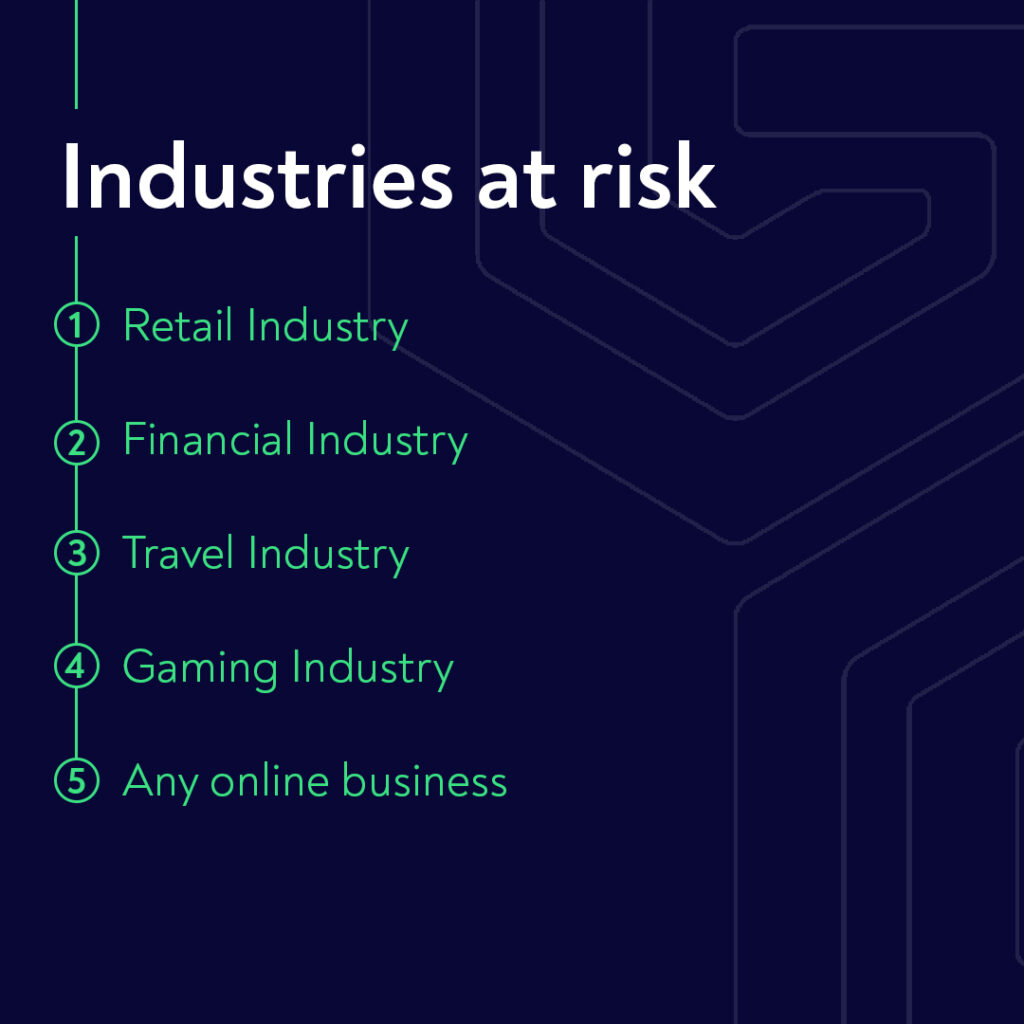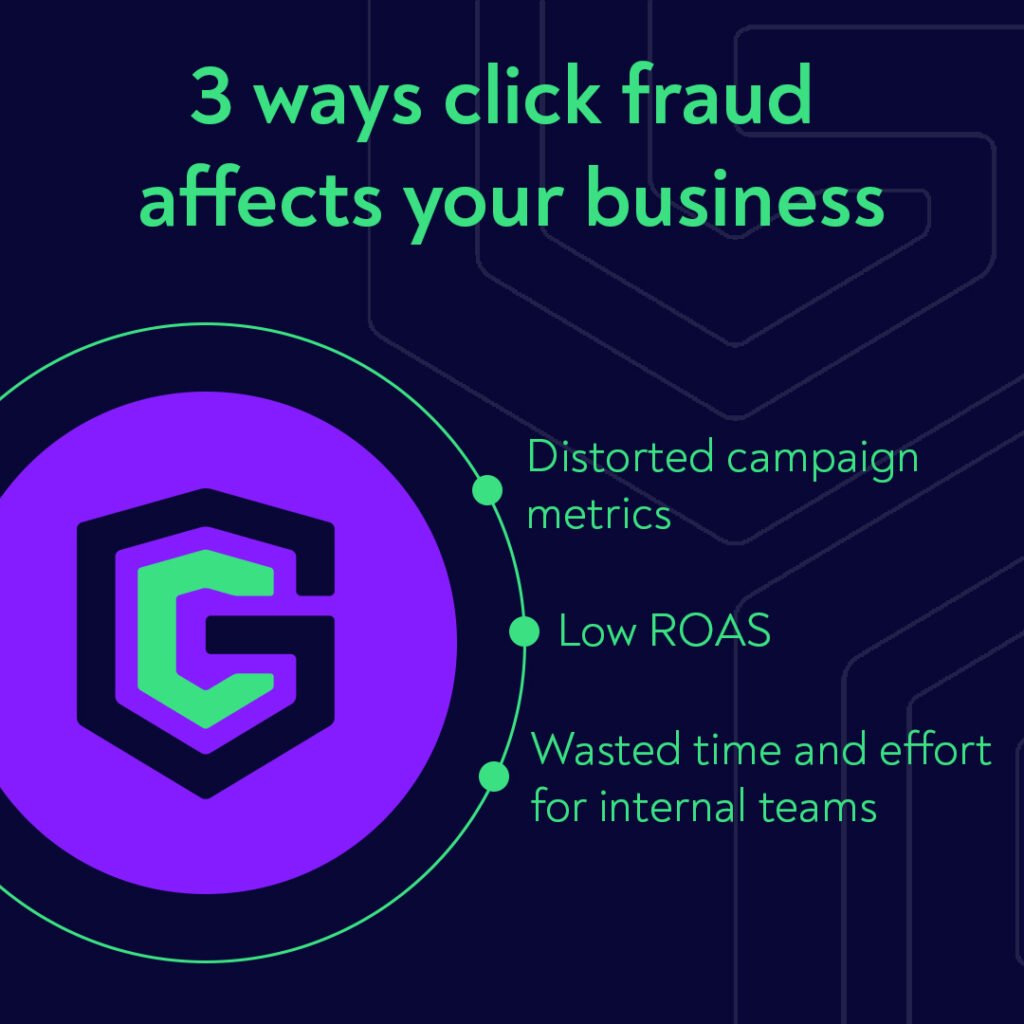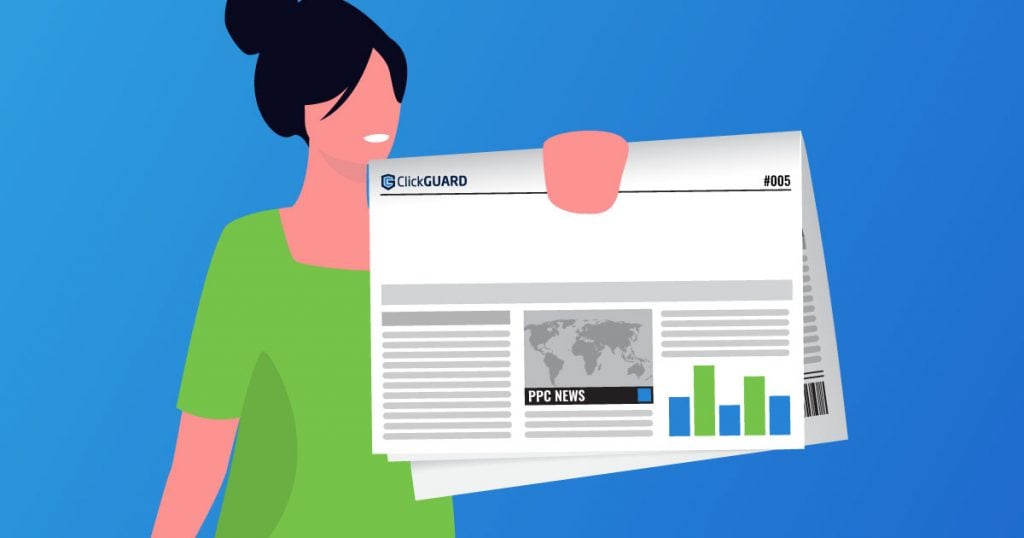When you consider the fact that the global cost of ad fraud is growing exponentially each year – with estimates to reach a staggering $100 billion USD in 2023 – it becomes clear that click fraud is not just a minor inconvenience for businesses. It’s a major threat to the entire advertising industry. And some industries are more at risk than others.
The problem with click fraud is that it can be quite challenging to detect and prevent. And the negative impact of click fraud are often more significant than many businesses realize: wasted ad spend, skewed campaign metrics, and – ultimately – ineffective online advertising campaigns are a big price to pay for something that can be avoided.
Click fraud is a growing problem in the digital advertising industry that affects businesses of all sizes. And while no industry is immune to the effects of click fraud, there are ways to detect and prevent click fraud from harming your advertising campaigns. In this article, we will examine the industries most affected by click fraud, how click fraud affects businesses, and what marketers can do to combat click fraud effectively.
Understanding Click Fraud
Pay-per-click (PPC) advertising is a widely used digital marketing strategy, where advertisers pay for each click on their ads. However, the success of PPC advertising relies on the validity of the clicks generated on those ads. Unfortunately, there are instances where clicks on PPC ads may not be genuine and are intended to deceive advertisers for profit. This is where click fraud comes in.
Click fraud refers to any action that manipulates the number of clicks on an ad with the intent to exploit or harm the advertiser. The act of click fraud can be carried out in various ways, and it is essential for marketers to understand what constitutes fraudulent clicks versus invalid clicks to take appropriate action.
Google categorizes invalid clicks as clicks that are unintentional or generated by automated tools. This includes accidental clicks, such as when a user double-clicks on an ad, and clicks or impressions generated by bots or other automated tools.
However, fraudulent clicks are a more sinister form of invalid clicks. These clicks are generated intentionally with the aim of inflating the cost of advertising for competitors, or for website owners to make more profits. This can occur through the use of click farms, where individuals are paid to click on ads, or through the use of botnets that automate clicks.
While accidental clicks and other invalid clicks can be frustrating for marketers, click fraud can result in significant financial losses. In addition to wasting advertising budgets, fraudulent clicks can also lead to skewed analytics data, which can make it difficult for marketers to make informed decisions.
As such, it is essential for marketers to understand the difference between invalid and fraudulent clicks and take proactive measures to prevent and detect click fraud. This can include monitoring campaigns for irregular patterns of clicks, using software tools to detect click fraud, and setting up strict ad targeting parameters to reduce the risk of fraudulent clicks. By taking these steps, marketers can protect their advertising campaigns and maximize the return on their advertising investments.
Is your industry at risk?
There are two defining factors that increase the likelihood that a particular industry will be affected by click fraud are:
1. The amount of online traffic
Industries that have a lot of online traffic can be prime targets for click fraudsters because they can potentially generate a significant amount of fraudulent clicks. This is because the higher the traffic volume, the more difficult it is for ad networks to detect and filter out fraudulent clicks. Fraudsters can exploit this vulnerability by generating large volumes of clicks that are difficult to distinguish from legitimate traffic. Additionally, the higher the traffic volume, the greater the potential revenue loss for advertisers, making these industries even more attractive targets.
2. The cost-per-click of relevant keywords
The cost-per-click of relevant keywords is another factor that can increase the likelihood of click fraud. Keywords that are relevant to high-value products or services tend to have higher costs-per-click (CPCs). For example, in the legal industry, keywords such as “personal injury lawyer” can have CPCs of up to $100. This makes these keywords more valuable to fraudsters, who can generate fraudulent clicks of higher value, driving up advertising costs for competitors significantly, or earning fraudsters more revenue through their own fake ads.

The following are examples of industries that are usually highly targeted by click fraud:
- Retail Industry
Click fraud is a major issue in the retail industry because of the nature of online shopping. With the increasing popularity of e-commerce, retailers are competing fiercely for a share of the online market. This competition means that advertisers are willing to pay higher prices for keywords related to their products, leading to a rise in cost-per-click (CPC). Unfortunately, this also makes the industry more vulnerable to click fraud.
Click fraudsters know that retailers are willing to pay high CPC prices for their ads, and they take advantage of this by creating fraudulent clicks on those ads.
- Financial Industry
As another industry with high-value keywords and fierce competition, finance and insurance companies are particularly vulnerable to click fraud. The cost per click (CPC) for keywords in financial services industries are often very high, making them lucrative targets for fraudsters looking to drive up the cost of clicks and drain advertising budgets.
- Travel Industry
The travel industry is another prime target for click fraud because of the high commissions that travel agencies and booking sites earn on bookings. Fraudsters can also use stolen credit card information to book fake reservations, which can lead to chargebacks and lost revenue for travel companies.
- Gaming Industry
The gaming industry is also at high risk of click fraud due to the popularity of mobile gaming apps. Fraudsters can use botnets or click farms to generate clicks on in-app ads, driving up advertising costs for game developers and publishers.
- Any online business
In addition to these industries, any business with a significant online presence, such as travel, healthcare, and education, can be at risk of click fraud. It’s essential for companies in these industries to be aware of the risk of click fraud and take proactive measures to protect their advertising campaigns. This can include using anti-fraud software, monitoring campaigns for irregular click patterns, and setting strict targeting parameters to reduce the risk of fraudulent clicks. By taking these steps, businesses can safeguard their advertising budgets and ensure that their advertising campaigns are reaching their intended audience.
3 ways click fraud affects your business
As if invalid clicks depleting your ad budget are not bad enough, click fraud can have a few other serious consequences for businesses. Here are three ways that click fraud can affect businesses: Click fraud affects businesses in three additional ways:

- Distorted campaign metrics
- Low ROAS
- Wasted time and effort for internal teams
1. Running campaigns blind
When a significant portion of clicks and traffic data come from invalid sources, it becomes impossible to accurately gauge the effectiveness of an ad campaign. Click fraud effectively prevents ads from reaching real customers, leaving marketers in the dark and unable to determine the true efficacy of their ad campaigns.
When campaign optimization is based on guesswork or inaccurate data, marketers also end up wasting precious time and resources on tasks with little to no return on investment. For instance, they may start optimizing high-traffic, low-performance campaigns hoping to improve conversion rates – instead of addressing the underlying issue of fraudulent clicks that skew campaign results.
Such guesswork can be a costly mistake, leading to wasted ad spend and decreased revenue. Campaigns optimized based on false data are unlikely to generate positive ROI, as they fail to effectively target actual customers. This not only hampers the success of current campaigns but also negatively impacts future advertising efforts, as marketing teams struggle to accurately analyze campaign results and adjust their strategies accordingly.
2. Ineffective campaigns with low ROAS
When businesses receive a high number of invalid clicks on their ads, they end up wasting their advertising budget on clicks that will never result in a conversion. This not only leads to a low ROAS – it also makes it difficult to determine which advertising channels and tactics are actually driving revenue.
Moreover, invalid clicks can negatively impact a business’s ability to find and attract new customers. When a business’s advertising budget is being consumed by invalid clicks, it limits their ability to target the right audience and ultimately reduces their reach. This can be especially detrimental for small businesses that rely on online advertising to attract new customers and compete with larger companies.
Without the ability to effectively reach their target audience, businesses risk being overshadowed by their competitors and losing out on valuable revenue. And without taking measures to block robots, businesses will continue to overpay for conversions and miss opportunities to reach their real audience.
3. Wasted time and effort for internal teams
In addition to distorting your ad campaign metrics, fraudulent clicks can lead your team to focus on non-revenue generating activities. For instance, fraudulent clicks can cause your sales team to pursue bogus prospects that were acquired through click bot traffic designed to mimic user behavior. These non-revenue generating leads may consume significant time and resources, leaving your team with less time to pursue legitimate leads that could actually generate revenue.
What business can do to fight click fraud
There are many things any digital marketer can do to reduce the risk of becoming a victim of click fraud, from supporting fraud-fighting initiatives on the industry level, raising internal awareness of click fraud issues on the company level, to utilizing third-party software designed to detect and prevent fraudulent clicks.
- Industry Level
Make use of industry initiatives to fight click fraud
- Company level
Raise internal awareness of click fraud issues
- Campaign level
Third-party software designed and other strategies to detect and prevent fraudulent clicks.
The Trustworthy Accountability Group (TAG) was created by the American Association of Advertising Agencies (4A’s), Association of National Advertisers (ANA), and Interactive Advertising Bureau (IAB) to “focus on four core areas: eliminating fraudulent digital advertising traffic, combating malware, fighting ad-supported Internet piracy to promote brand integrity, and promoting brand safety through greater transparency.” TAG works towards establishing an all-around healthy and transparent marketing ecosystem. Among other initiatives, TAG has developed Certified Against Fraud Guidelines that will start being enforced in January 2022. The TAG certification program was launched in 2016 “to combat invalid traffic in the digital advertising supply chain.” In addition, TAG publishes benchmark reports on invalid clicks, regional snapshots, and best practices. Despite the scale of click fraud and its effect on digital ad spend, this problem remains relatively obscure: according to the Google Trends charts above, it hasn’t been top-of-mind for marketers for quite some time. Demonstrating how invalid clicks deplete your budget and skew your data is the first step in getting a go-ahead to fight the problem and develop effective strategies against them. Here’s what digital marketers can do to increase internal click fraud awareness:
- Share information about internal marketing processes
- Establish expectations for tracking digital advertising spend and ROAS
- Include protection against fraudulent ad traffic in your information security plan
- Establish roles, set expectations and budgets, and determine performance indicators for click fraud protection initiatives when developing your next business plan
Know your industry and run regular paid click audits
Even though technological advances make it harder to do so, it remains possible to identify real users by their behavioral patterns. Once you know what your buyer’s digital journey looks like, you can use this information to protect yourself from click fraud.
In other words, if you know the behavioral patterns of your buyers, you can learn to identify anomalies. For example, if most of your customers fill out a form one week after being shown an initial ad, an influx of forms submitted by users who were shown the ad seconds before the form submission is likely to be a fraudulent attack. In addition to understanding your industry, regular paid click audits can help you spot false traffic patterns and build an effective defense system for your marketing campaigns. By conducting regular audits, you can detect suspicious traffic and take appropriate measures to prevent click fraud from affecting your business.
The Best Way to Stop and Prevent Click Fraud
In a modern business climate that necessitates online advertising, the truth is that no industry is immune to click fraud.
One of the simplest and most effective ways to combat fraudulent traffic is by using click fraud protection software, such as ClickGUARD.
ClickGUARD is an essential tool for anyone running PPC ads, as it offers advanced algorithms to detect and prevent click fraud, bots, and other illegitimate clicks that can deplete your ad budget. With ClickGUARD, you can rest assured that your budget is being spent on real, legitimate clicks that drive conversions.
In addition to blocking unwanted clicks, ClickGUARD also provides detailed reports that give you insights into your campaign’s performance. This information can help you optimize your targeting and ad spend, ensuring that you get the most out of your advertising budget.
With the latest version of ClickGUARD, you also have access to fully automated features that make managing your campaigns easier than ever before, improved report tools, Google and Facebook Ads support, and a lot more.
If you’re a PPC advertiser, what are you waiting for? Waste less and convert more with ClickGUARD
FAQ
What is click fraud?
Click fraud refers any time clicks on an ad are intentionally manipulated to exploit or harm the advertiser, causing increased advertising costs for competitors or more profits for website owners.
How does click fraud impact businesses?
The negative impact of click fraud includes wasted ad spend, skewed campaign metrics, and ultimately, ineffective online advertising campaigns.
What factors that increase the likelihood of click fraud in a particular industry?
Two defining factors that increase the likelihood of click fraud in a particular industry are the amount of online traffic and the cost-per-click of relevant keywords.
What can businesses do to combat click fraud?
Businesses can combat click fraud by monitoring their campaigns for irregular patterns of clicks or using third-part software tools to detect and prevent click fraud



